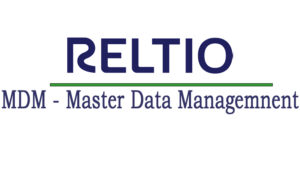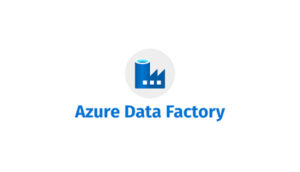Data Analytics Certification Training
One of the top providers of online IT training worldwide is VISWA Online Trainings. To assist beginners and working professionals in achieving their career objectives and taking advantage of our best services, We provide a wide range of courses and online training.
Learners : 1080
Duration: 30 Days
About Course
Data analytics is a discipline that is always changing. Your foundation is quickly built upon by this course. These fundamental tools and approaches help you make successful decisions quickly, whether you’re planning your entire business intelligence strategy or conducting your own research. In this brisk introductory class, we’ll look at the background of business intelligence, how it relates to data analysis, and why the two are necessary to support organizations in assembling the “data puzzle” completely. We’ll discuss the challenges teams encounter when dealing with data overload and offer some potential fixes.
Data Analytics Training Course Syllabus
✔ Why Python for Machine Learning
✔ Installing Python
✔ Python IDE’s
✔ Writing the First Python Programme
✔ Executing of Python programs
✔ Integer
✔ Float
✔ String
✔ Bool
✔ Relational Operators
✔ Arithmetic Operators
✔ Logical Operators
✔ Concatenation Operator
✔ Lists
✔ Tuples
✔ Sets
✔ Dictionaries
✔ Range
✔ If and else if statements
✔ For and while Statements
✔ Iterables and Iterators
✔ List Comprehensions and Generator
✔ Writing user-defined functions
✔ Lambda Functions
✔ Using *args and *kwargs
✔ Handling Errors in Python
✔ Types of Errors
✔ Using try and except
✔ Raising an Error
✔ Usage of Modules
✔ Datetime
✔ Re
✔ OS
✔ Numpy
✔ Pandas
✔ Matplotlib • Seaborn
✔ scikit-learn
✔ sklearn and many more
✔ File Input/output
✔ Opening of Files
✔ Reading Information from Files
✔ Writing to a File
✔ Csv Files
✔ Excel Sheets
✔ SAS Files
✔ From Web
✔ Working with Relational Databases
✔ Using API’s
✔ Exploring the data
✔ Tidying Data for Analysis
✔ Combining Data
✔ Cleaning data
✔ Working with Numpy Arrays
✔ Creating and Manipulating Numpy Arrays
✔ Mathematical and Statistical Functions
✔ Subsetting Numpy Arrays
✔ Concatenating Numpy Arrays
✔ Pandas Foundations
✔ Data Ingestion and Inspection
✔ Exploratory Data Analysis
✔ Time Series in Pandas
✔ Extracting and Transforming Data
✔ Advanced Indexing
✔ Re-arranging and Re-shaping of data
✔ Grouping Data
✔ Preparing Data
✔ Concatenating Data
✔ Merging Data
✔ Customizing plots
✔ Plotting 2D arrays
✔ Statistical Plotting using Seaborn
✔ Analyzing Time series and Images
✔ Basic Plotting with Bokeh
✔ Layouts, Interactions and Annotations
✔ Building Interactive Apps with Bokeh
✔ Basic concepts of String Manipulations
✔ Formatting Strings
✔ Pattern Matching
✔ Advance Regular Expressions
| Live Instructor Based Training With Software |
| Lifetime access and 24×7 support |
| Certification Oriented content |
| Hands-On complete Real-time training |
| Get a certificate on course completion |
| Flexible Schedules |
| Live Recorded Videos Access |
| Study Material Provided |
Data Analytics Training - Upcoming Batches
7th NOV 2022
8 AM IST
Coming Soon
AM IST
5th NOV 2022
8 AM IST
Coming Soon
AM IST
Don't find suitable time ?
CHOOSE YOUR OWN COMFORTABLE LEARNING EXPERIENCE
Live Virtual Training
-
Schedule your sessions at your comfortable timings.
-
Instructor-led training, Real-time projects
-
Certification Guidance.
Self-Paced Learning
-
Complete set of live-online training sessions recorded videos.
-
Learn technology at your own pace.
-
Get access for lifetime.
Corporate Training
-
Learn As A Full Day Schedule With Discussions, Exercises,
-
Practical Use Cases
-
Design Your Own Syllabus Based
Data Analytics Training FAQ'S
These are typical data science interview questions that are regularly asked by interviewers to gauge how well you understand the necessary qualifications. Your understanding of the competencies needed to become a data scientist will be tested by this data analyst interview question.
Get ahead in your career by learning Data Analytics through VISWA Online Trainings
You’ll typically discover a question about the most popular tool in any data analytics interview questions. These behavioural interview questions for data analysts and data scientists are designed to gauge your understanding of the subject and depth of expertise. Only candidates with a wealth of practical experience will perform well on this question. Therefore, prepare for your analyst interview by practising tools and analytics questions as well as data analyst behavioural interview questions.
The most useful tools for data analysis are:
- Tableau
- Google Fusion Tables
- Google Search Operators
- KNIME
- RapidMiner
- Solver
- OpenRefine
- NodeXL
- io
- Apache Spark
- R Programming
- SAS
- Python
- Microsoft Power BI
- TIBCO Spotfire
- Qlik
- Google Data Studio
- Jupyter Notebook
- Looker
- Domo
Without this query, a list of interview questions and solutions for data analysts would be incomplete. Data analysts frequently use the term “outlier” to describe a number in a sample that appears to be significantly different from the norm.The outlier values are significantly different from the data sets. These might be smaller or bigger, but they would be offset from the primary data points. These outlier values may exist for a variety of causes, including measurement errors and others.Two types of outliers exist.
Using the K-mean partitioning technique, objects are divided into K groups. The clusters in this approach are spherical, the data points are oriented around each cluster, and the cluster variances are similar to one another. Since it already knows the clusters, it computes the centroids. By identifying the different types of groupings, it supports the business’s presumptions. It is helpful for a variety of reasons, including its ability to handle big data sets and ease of adaptability to new examples.
Multi-source problems are a group of computational data composed of dynamic, unstructured, and overlapping data that is hard to go through or obtain patterns from. To tackle multi-source problems, you need to:
- Identify similar data records and combine them into one record that will contain all the useful attributes, minus the redundancy.
- Facilitate schema integration through schema restructuring.
Reviews
 Vishnu Gadipudi2023-08-20I Enrolled in VISWA Online Trainings for IBM Integration BUS course . Recently I Completed IBM Integration BUS Batch. It was Really Awesome Experience. Best Place To Learn , Experienced Trainer, Gives Us High Level Knowledge....
Vishnu Gadipudi2023-08-20I Enrolled in VISWA Online Trainings for IBM Integration BUS course . Recently I Completed IBM Integration BUS Batch. It was Really Awesome Experience. Best Place To Learn , Experienced Trainer, Gives Us High Level Knowledge.... Navya Biradavolu2023-08-20I was enrolled for looker Bl Tool,it was amazing experience . especially soft skill batch is one of my favourite batch . overall learning process is quite impressive.
Navya Biradavolu2023-08-20I was enrolled for looker Bl Tool,it was amazing experience . especially soft skill batch is one of my favourite batch . overall learning process is quite impressive. Indla sneha2023-08-20I have joined I have joined VISWA Online TRAININGS for Java full stack course and i have completed Advance Java module. I had a good knowledge of Hibernate, spring,spring boot,spring MVC. Tutor has knowledge in depth and is supportive. Srinadh sir solved all our doubts....
Indla sneha2023-08-20I have joined I have joined VISWA Online TRAININGS for Java full stack course and i have completed Advance Java module. I had a good knowledge of Hibernate, spring,spring boot,spring MVC. Tutor has knowledge in depth and is supportive. Srinadh sir solved all our doubts.... bindu hima2023-08-20I am recently completed Talend course and trainer is Rajendra very professional and helpful. All the doubts were solved in a precise manner.
bindu hima2023-08-20I am recently completed Talend course and trainer is Rajendra very professional and helpful. All the doubts were solved in a precise manner. Tarunasree Gowra2023-08-20"I truly enjoyed this course." Chaitanya sir fantastic-very knowledgeable. Sir give us very informative and clear instruction on how to achieve the goal. Thank you!
Tarunasree Gowra2023-08-20"I truly enjoyed this course." Chaitanya sir fantastic-very knowledgeable. Sir give us very informative and clear instruction on how to achieve the goal. Thank you! Tejaswini Kommu2023-08-20Overall Linux Admin sessions batch was very good. Mr. RAM Krishna teaching was very helpful to remind our basic concepts in linux & networking.
Tejaswini Kommu2023-08-20Overall Linux Admin sessions batch was very good. Mr. RAM Krishna teaching was very helpful to remind our basic concepts in linux & networking. Gopanaboina Mounika2023-08-20It was great learning with such a great and experienced staff. Praveen Sir (Oracle EPM Cloud - FCCS) was very helpful and operations team also very helpful in solving any minor problems students go through process.
Gopanaboina Mounika2023-08-20It was great learning with such a great and experienced staff. Praveen Sir (Oracle EPM Cloud - FCCS) was very helpful and operations team also very helpful in solving any minor problems students go through process. Jyothi Gutlapalli2023-08-20I like to share my experience which provide lots of courses and one of those I recently completed my Salesforce BA Course and I like to tell you it was a great experience and my knowledge and confidence is really boosted after completing this course.
Jyothi Gutlapalli2023-08-20I like to share my experience which provide lots of courses and one of those I recently completed my Salesforce BA Course and I like to tell you it was a great experience and my knowledge and confidence is really boosted after completing this course. Harshibandi2023-08-20Good experience and great learning platform for Hyperion Essbase and Planning. The faculty is also well trained and soft spoken.
Harshibandi2023-08-20Good experience and great learning platform for Hyperion Essbase and Planning. The faculty is also well trained and soft spoken. Chaitu Viswa2023-08-20It was very good session for QlikView. I would like to thank to teacher Mr.Chandu for providing guidance for the required modules. Thanks VISWA Team for giving apportunity to leran new skills.
Chaitu Viswa2023-08-20It was very good session for QlikView. I would like to thank to teacher Mr.Chandu for providing guidance for the required modules. Thanks VISWA Team for giving apportunity to leran new skills.




